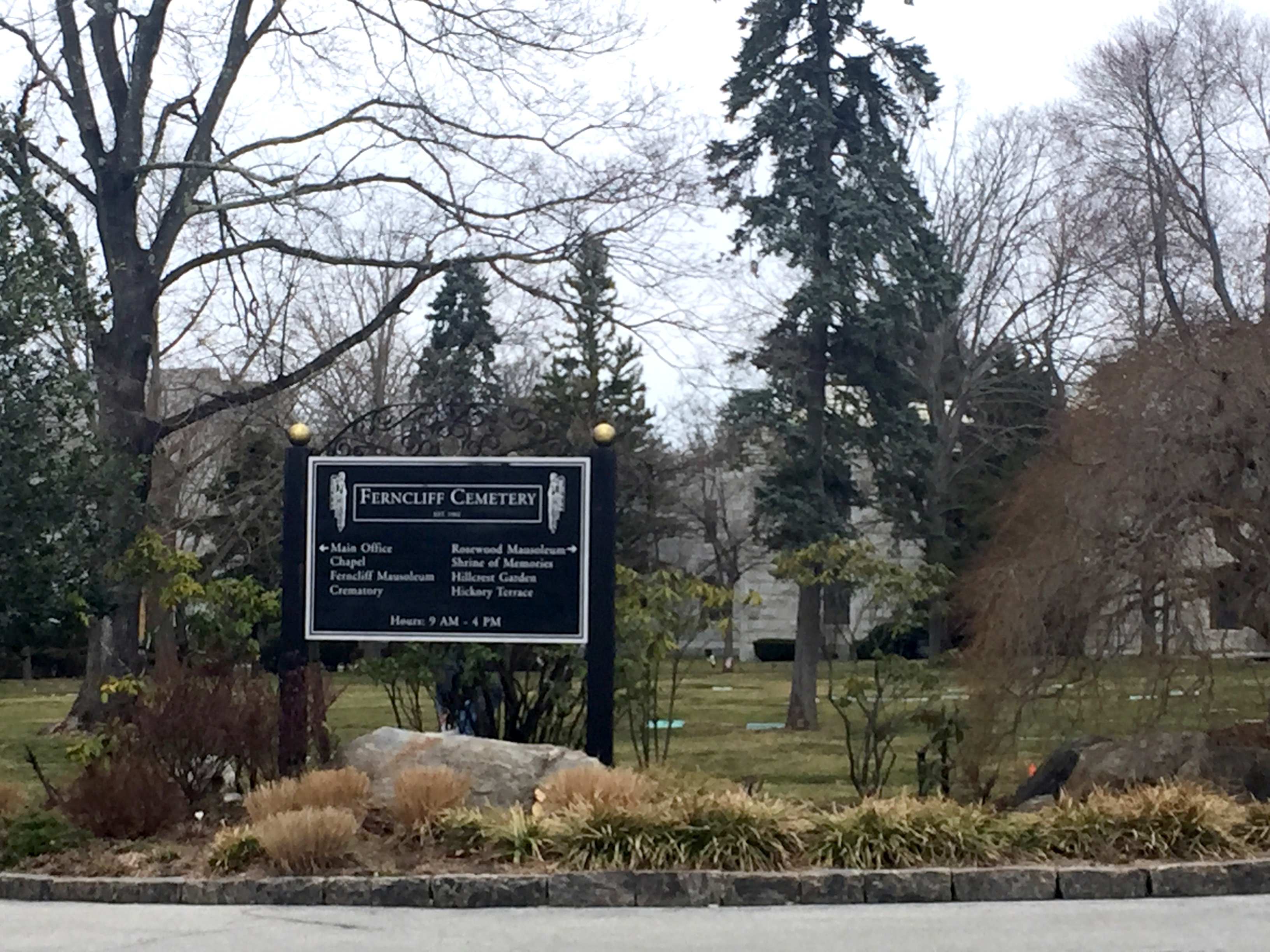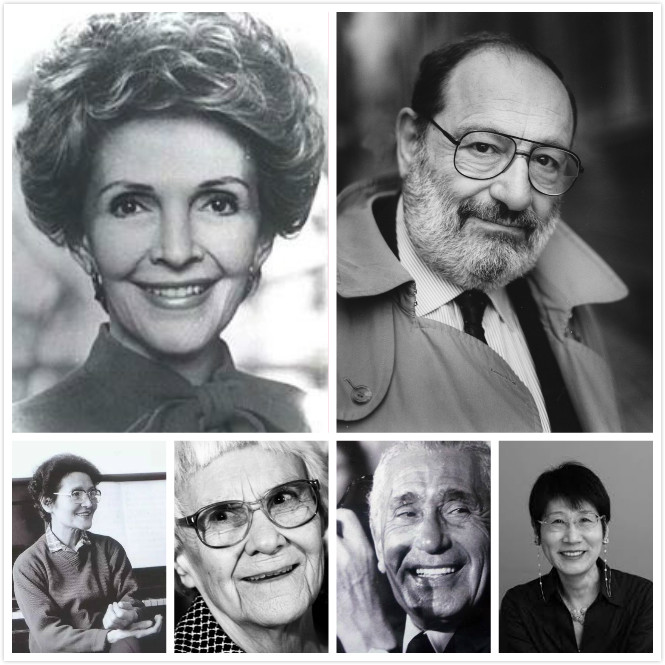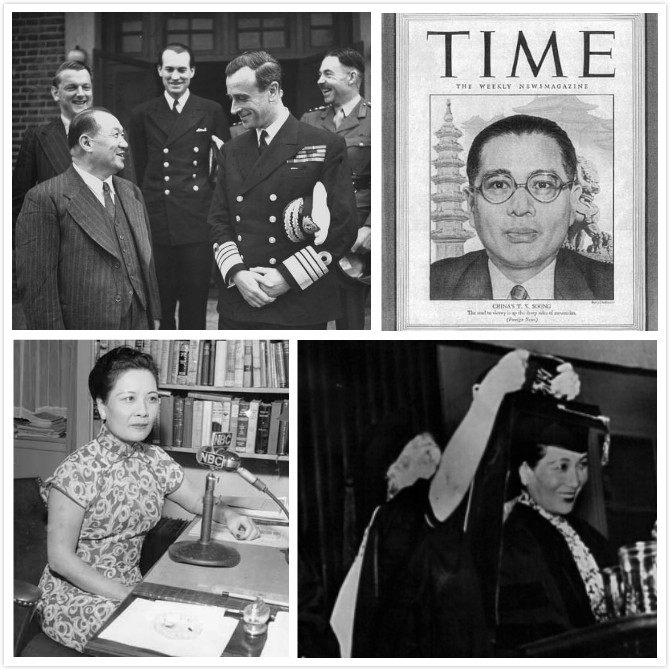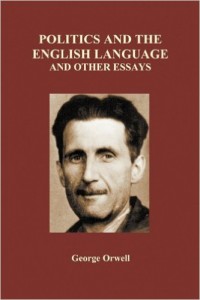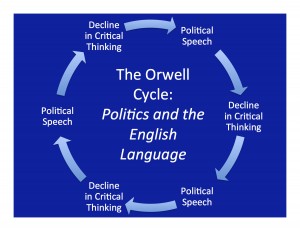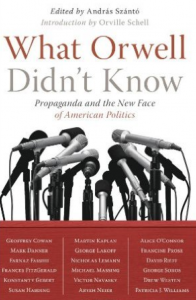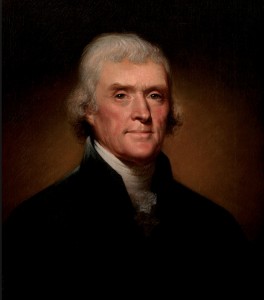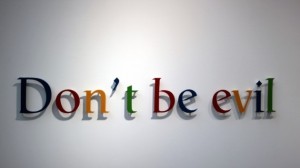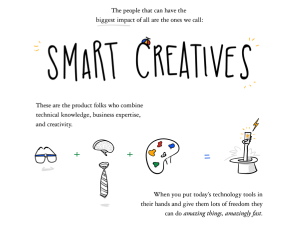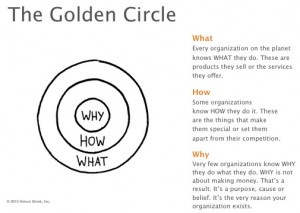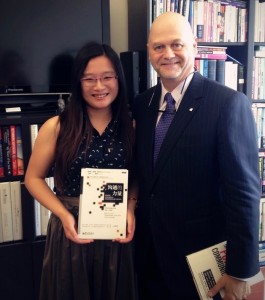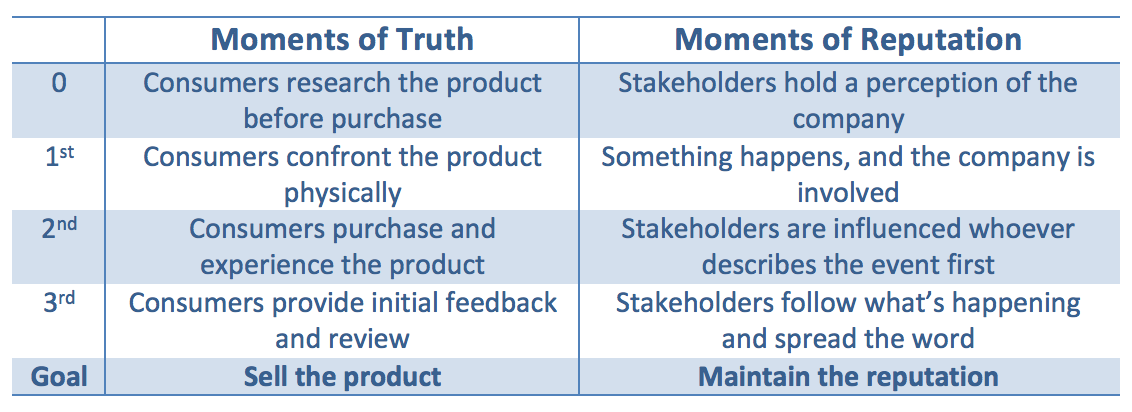One year ago, I organized a four-week book tour for the Chinese edition of Power of Communication, visiting more than 15 prestigious universities and participating in many events in four Chinese cities.
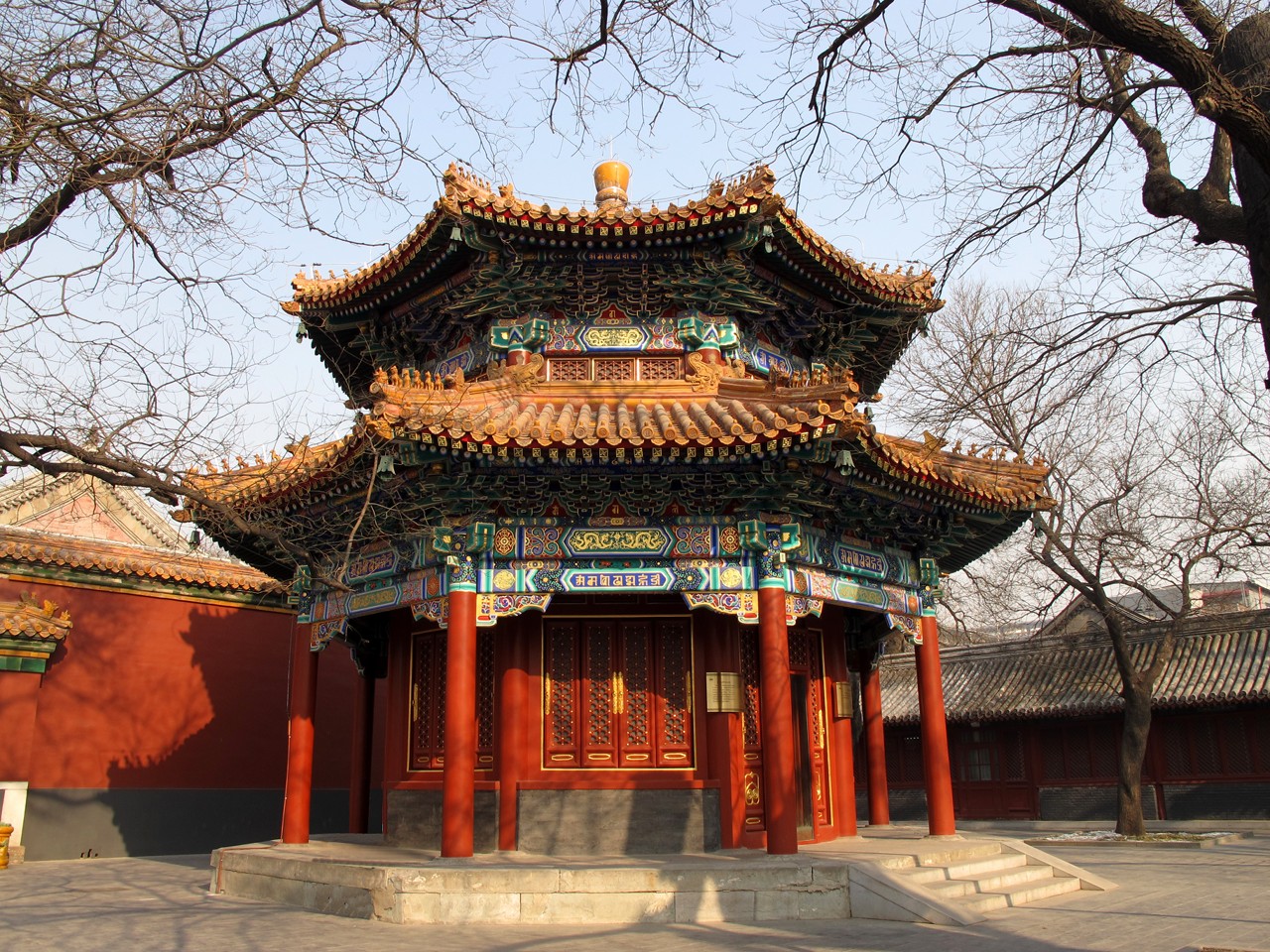
During the trip, I had one day off on my birthday while we were in Beijing. As a birthday gift to myself, I visited the Yonghe Temple (also known as Yonghe Lamasery), the largest and most perfectly preserved lamasery in China. It was built more than 400 years ago and was the imperial palace of the Yongzheng Emperor, the fifth emperor of the Qing Dynasty. After the Yongzheng Emperor’s ascension to the throne, the imperial palace became a Tibetan Buddhist lamasery.
The Yonghe Temple reminded me of my old days in Tibet – admiring the way lamas debated each other to come to a clearer understanding of Buddhism. It also reminded me of watching crows lingering over the top of the mountains. The smell of the incense and the poor-quality air at the Yonghe Temple mingled together smoothly. I do not subscribe to a particular religious tradition, but I respect all faiths. As I stood there, I reflected upon how religion and history intertwine in the same way those scents mingled together.
One year later, I gave myself another special birthday gift. Last Sunday, I visited the Ferncliff Cemetery in Hartsdale, New York. I decided to visit that place because there are some very significant Chinese notables buried there, including the former First Lady of the Republic of China (ROC).
My motherland China is famous for its five thousand years of history. My hometown Shanghai is famous as “The Paris of the East” during the 1920s and 1930s, the beginning of the ROC. I love everything about the old Shanghai and read many books by Ailing Chang, Leo Ou-fan Lee, Geling Yan, Kenneth Hsien-yung Pai and other writers who are either from that era or wrote a lot about that era. Everything from that era fascinates me. That is also why when I learned that the former First Lady of the ROC, the former Premier of the ROC, the former top diplomat of the ROC, and former governors of the ROC government and Central Bank are all buried in Ferncliff Cemetery, I knew I had to go.
The world lost several distinguished leaders this spring. We lost Nancy Reagan. We lost Harper Lee. We lost Umberto Eco. We lost “China’s Nightingale” Xiaoyan Zhou. We lost Egyptian journalist Mohamed Hassanein Heikal. We lost Japanese writer Satoko Tsushima (daughter of the renowned Japanese writer Osama Dazai).
We are rarely able to decide the way we leave the world, but we can easily decide the way we want people to remember us. Even the space in which our bodies take our final rest connotes the way we will be remembered. For example, in the history of the ROC, some notables made their memorials very ostentatious, while others opted for more low-key resting grounds.
The three mausoleums housing the first ROC President, the first female Vice-Chairman of the People’s Republic of China (PRC), and the first President of modern ROC in Taiwan were all built in an extravagant way:
- In his oral will, Sun Yat-sen, ROC’s founding father, wanted his remains to be embalmed for public display, just as the Soviet Union publicly displayed Lenin’s remains. But the Soviet Union did not agree to share their embalming techniques, as they believe that only Lenin can be “immortal.” In the end, China built a 80,000 square meter mausoleum for Sun in Nanjing, which is now a popular tourist attraction.
- Sun’s wife, Soong Ching-ling, also known as Madame Sun Yat-sen and one of the “Soong sisters,” had served as the Vice Chairman of PRC and survived heavy criticism during the Cultural Revolution. Her tomb is located in Shanghai and has also become a tourist attraction.
- Sun Yat-sen’s successor, Chiang Kai-shek, who ruled Taiwan as President of the Republic of China and General of the Kuomintang until his death in 1975, is “temporarily” resting in the Cihu Mausoleum in Taiwan. It’s temporary because he wished to be ultimately buried in his hometown in Zhejiang province once the Kuomintang recovered Mainland China from the Communists. He was not buried in the traditional way, but entombed in a black marble sarcophagus. He may end up being this way for a long time.
- (Left: Sun Yat-sen’s Mausoleum; Right: Soong Ching-ling’s Mausoleum; Bottom: Chiang Kai-shek’s Mausoleum)

On the other hand, the former First Lady of the ROC, the other two of the three Soong sisters, the former Premier of the ROC, one of the most influential Chinese diplomats and core leaders of the former Chinese Central Bank are buried in a very low-key way in the Ferncliff Cemetery in Hartsdale, New York:
- Chiang Kai-shek’s wife Soong May-ling, who was not only a First Lady of the ROC, but also Soong Ching-ling’s younger sister and Sun’s sister in law, is buried in a private room in the Ferncliff Mausoleum. Her lifespan covered three centuries (19th, 20th and 21st). According to The New York Times, she is the only first lady during World War II who lived into the 21st century[1]. She did not want to be buried with her older sister Song Ching-ling in Shanghai nor with her husband in Taiwan. Rather, she wanted to be buried next to her eldest sister, Soong Ai-ling, who died before her and was already buried in Ferncliff.
- The eldest Soong sister, Soong Ai-ling, who was also a sister-in-law of both Sun Yat-sen and Chiang kai-shek, rests next to Soong May-ling’s private room in Ferncliff. Soong Ai-ling seemed to be the most low profile Soong compared to her Vice Chairman sister and her First Lady sister. However, she was Sun Yat-sen’s chief secretary after her graduation from Wesleyan College – all Soong sisters are Wesleyan’s alumnae – and gave the job to her younger sister Soong Ching-ling, who later became Sun’s wife. Soong Ai-ling was also the matchmaker for Chiang Kai-shek and Soong May-ling. Soong Ai-ling is buried with her husband, Kung Hsiang-hsi, and their children, making her the only Soong who is buried with her husband and has children.
- Soong Ai-ling’s husband, Kung Hsiang-hsi, is buried alongside her and their children in Ferncliff Mausoleum. He was the former Premier, former Minister of Industry and Commerce, former Minister of Finance of the ROC and former Governor of the Central bank of China. He received a master’s degree in economics from Yale University.
- Kung’s brother-in-law, Soong Tse-ven, is one level down in the same Mauseloum building. Soong Tse-ven was also highly influential in determining the economic and diplomatic policies of the ROC government in the 1930s and 1940s. After graduating with a master’s degree in economics from Harvard University and a doctorate degree in economics at Columbia University, Soong Tse-ven returned to China and served in the Kuomintang-controlled government as the Minister of Finance, the Governor of the Central Bank of China, and the Minister of Foreign Affairs. He was the head of the Chinese delegation to the United Nations Conference on International Organization in San Francisco in 1945, which later became the United Nations. He was in charge of negotiating with the Soviet leader Joseph Stalin in Moscow and in charge of negotiating with the 33rdS. President Harry Truman in Washington, D.C.
- The second youngest brother in the Soong family, Soong Tse-liang, is also buried in Ferncliff Cemetery. He was not as influential as his sisters and brother, but he also served as the Secretary for Foreign Affairs in the ROC government.
- (Upper Left: Kung with
Louis Francis Albert Victor Nicholas Mountbatten
; Upper Right: Soong Tse-ven on TIME’s cover; Bottom Left: Soong May-ling on NBC; Bottom Right: Soong Ai-ling graduated from Wesleyan College.)
The Soong sisters are not the only Chinese notables in Ferncliff Cemetery. The cemetery listed three Chinese in their Celebrites & Notables list: Madame Chiang, Soong Tse-ven and Wellington Vi Kyuin Koo. Koo was a very prominent diplomat of the ROC. He attended the Paris Peace Conference of 1919 as one of China’s representatives; he served as an Ambassador to France, Great Britain and the United States; he was a participant in the founding of the United Nations; he sat as a judge on the International Court of Justice in The Hague in the mid 20th Century.
 (Photo of the members of the commission of the League of Nations created by the Plenary Session of the Preliminary Peace Conference, Paris, France, 1919.Wellington Vi Kyuin Koo is the 4th standing from right to left.)
(Photo of the members of the commission of the League of Nations created by the Plenary Session of the Preliminary Peace Conference, Paris, France, 1919.Wellington Vi Kyuin Koo is the 4th standing from right to left.)
Koo’s daughter, Patricia Koo Tsien, a senior official in the United Nations and the founder of the Ad Hoc Group on Equal Rights for Women in the U. N. Secretariat, is buried next to her husband on the second floor of the Ferncliff Mausoleum. Another influential Chinese diplomat, Dr. Victor Chi-tsai Hoo, the first Chinese Under-Secretary of the United Nations, is buried in the same building.
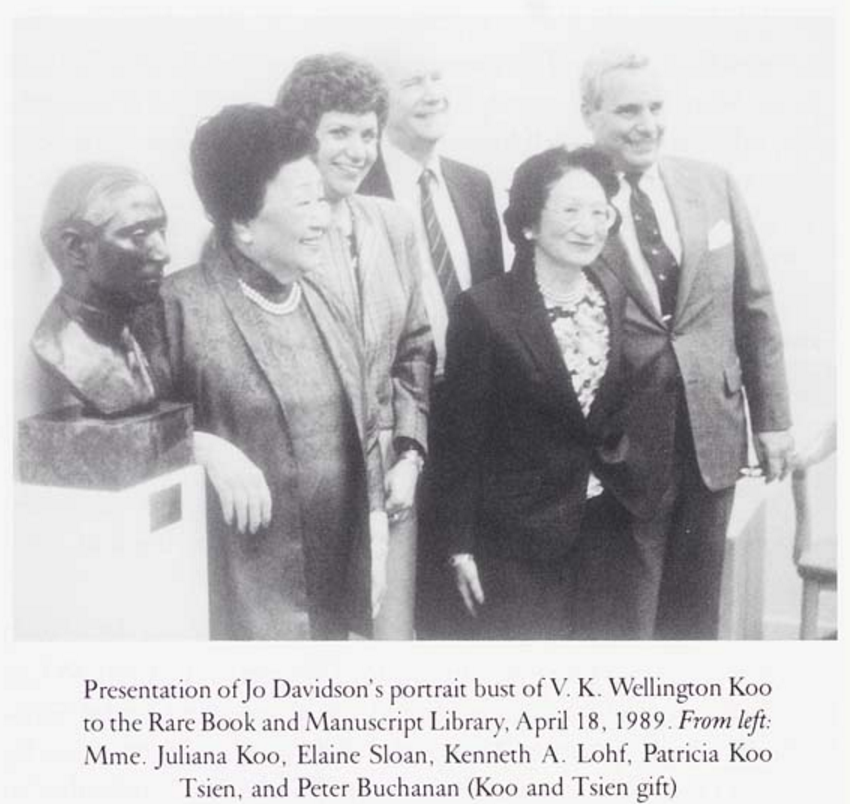 (Patricia Koo Tsien in 1989. Source: Columbia Library columns)
(Patricia Koo Tsien in 1989. Source: Columbia Library columns)
The last unexpected name I saw in Ferncliff Cemetery is not as famous as any of the rest, but completes the puzzle of a well-known Chinese romantic epic. There was a legendary Chinese poet Xu Zhi-mo in the beginning of the ROC. He was legendary in part because of his romantic poems, and his friendship with the Indian poet Rabindranath Tagore, but mostly because of his romance with three Chinese women. He had two sons with his first wife, Yu-Yi Chang, a woman he never loved but who he married at his parents’ direction. Xu finished his studies at Columbia University and flew to London, and fell in love with Chinese architect and writer Lin Hui-yin. His most renowned poem is about his feelings for her and their days together in Cambridge. By the way, Lin Hui-yin’s niece is Maya Lin, the designer of the Vietnam Veterans Memorial in Washington, D.C. Xu divorced his wife, but Lin only ever saw Xu as a friend. Xu later married another Chinese artist, Lu Xiaoman. This union was regarded as unethical because two divorcees getting married was not considered appropriate in China 90 years ago. Xu died in a plane crash in 1931. Lin Hui-yin died in 1955 and is buried in Revolutionary Cemetery in Peking because she contributed to the design of the Chinese national flag, the National Emblem of the People’s Republic of China and the Monument to the People’s Heroes located in the Tiananmen Square. Lu died in 1965 and is buried in Suzhou. Chang was not as famous as Xu’s other love interests, but she had another happy marriage after her divorce with Xu and lived much longer (she died in 1988). She is buried in Ferncliff Maseoulum. And her son with Xu and daughter-in-law are buried beside her.
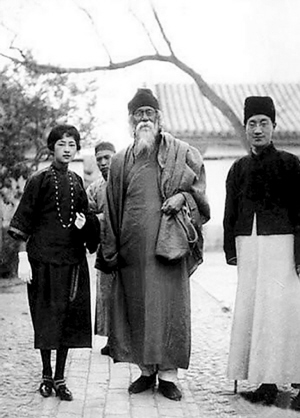
(Lin Hui-yin,Rabindranath Tagore and Xu Zhi-mo)
I was surprised to see so many famous Chinese names in a cemetery in Westchester County, New York. But I am not surprised to see that a part of Chinese history is buried more than 7,000 miles away from China.
I still vividly remember the squawking crows in the cemetery in Hartsdale. I had never thought of the crow as a spirit animal associated with life and death until I saw them in Tibetan lamaseries, in Japanese Shinto shrines, and now in a cemetery in Westchester County.
People rarely visit a cemetery on their birthdays. I did. And I am still not quite sure if all human beings are born equal, but I am pretty sure all human beings are equal in death. If you visit any public cemeteries, you will find that Christian crosses and Jewish Stars, Chinese names and English names are standing next to each other – sharing together this hallowed ground.
Sidebar:
Born in Shanghai, Chang is one of the most influencial writers in modern China. Her fiction is among the best Chinese literature of her time. As University of Southern California professor Dominic Cheung says: “Had it not been for the political division between Nationalist and Communist Chinese, she would almost certainly have won a Nobel Prize[2].” Her second husband, Reyher, was among those who helped to extricate German playwright and poet Bertolt Brecht and his family from Nazi Germany[3]. Chang was found dead in her Los Angles apartment where she had lived as a virtual recluse, according to New York Times Obituaries[4].
Geling Yan (1959 – )
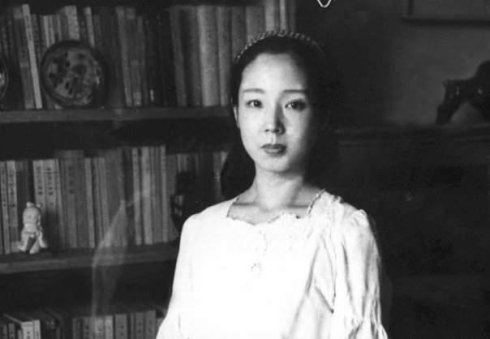
Born in Shanghai, Yan is a renowned novelist and scriptwriter. She is a member of the Hollywood Writer’s Guild of America and the Writer’s Association of China. She served in the People’s Liberation Army during the Cultural Revolution and later as a journalist in the Sino-Vietnamese War, achieving a rank equivalent to Lieutenant Colonel.
Kenneth Pai Hsien-yung (1937 -)
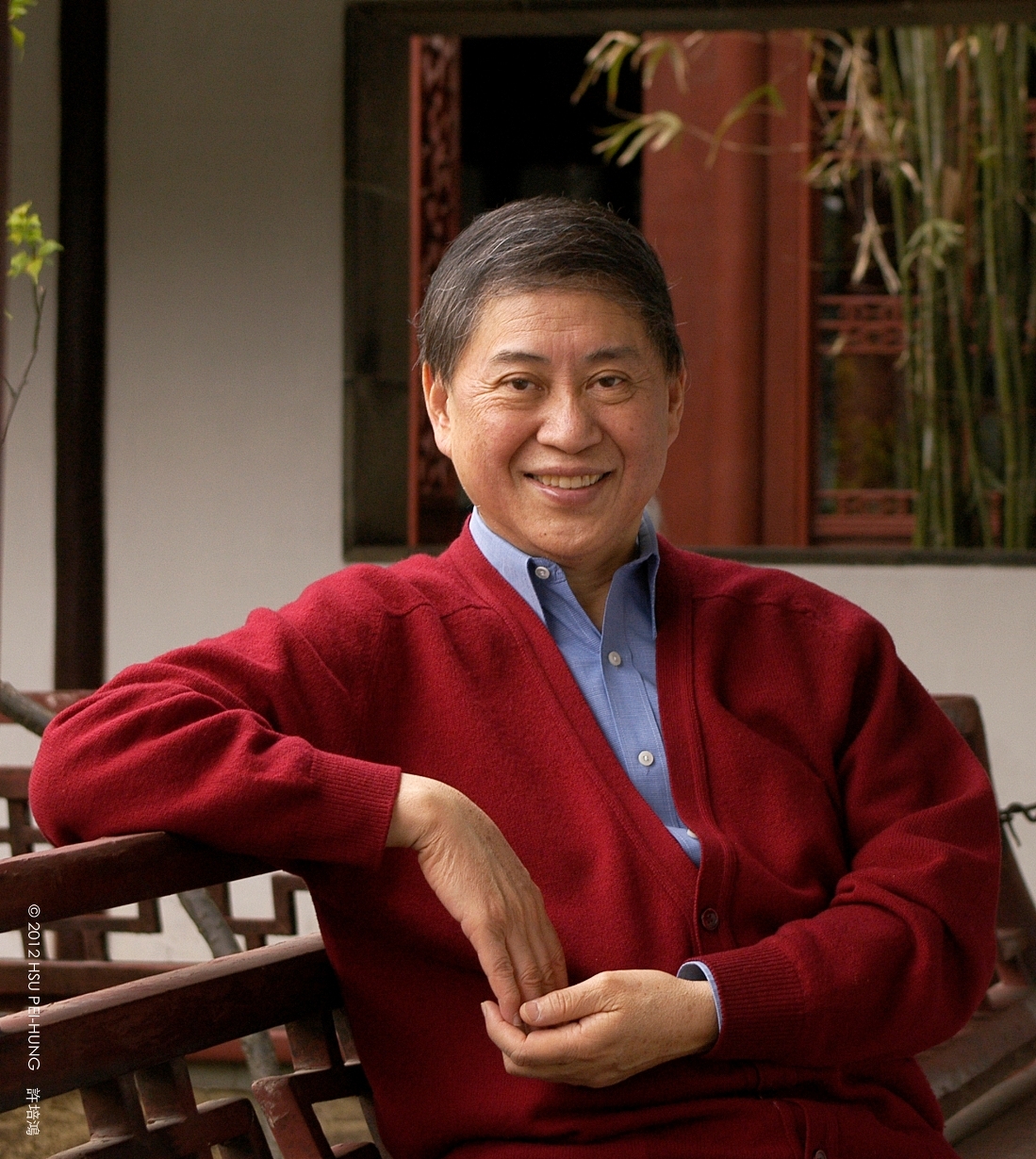
Pai is a famous writer, who wrote about the Old Shanghai, Taiwan, Chicago and New York. He was born Muslim, but attended missionary Catholic schools and embraced Buddhist meditation practices. His father was a well-known Kuomintang General. Pai won the Order of Brilliant Star award for ROC for outstanding contribution.
Leo Ou-fan Lee (1942 – )
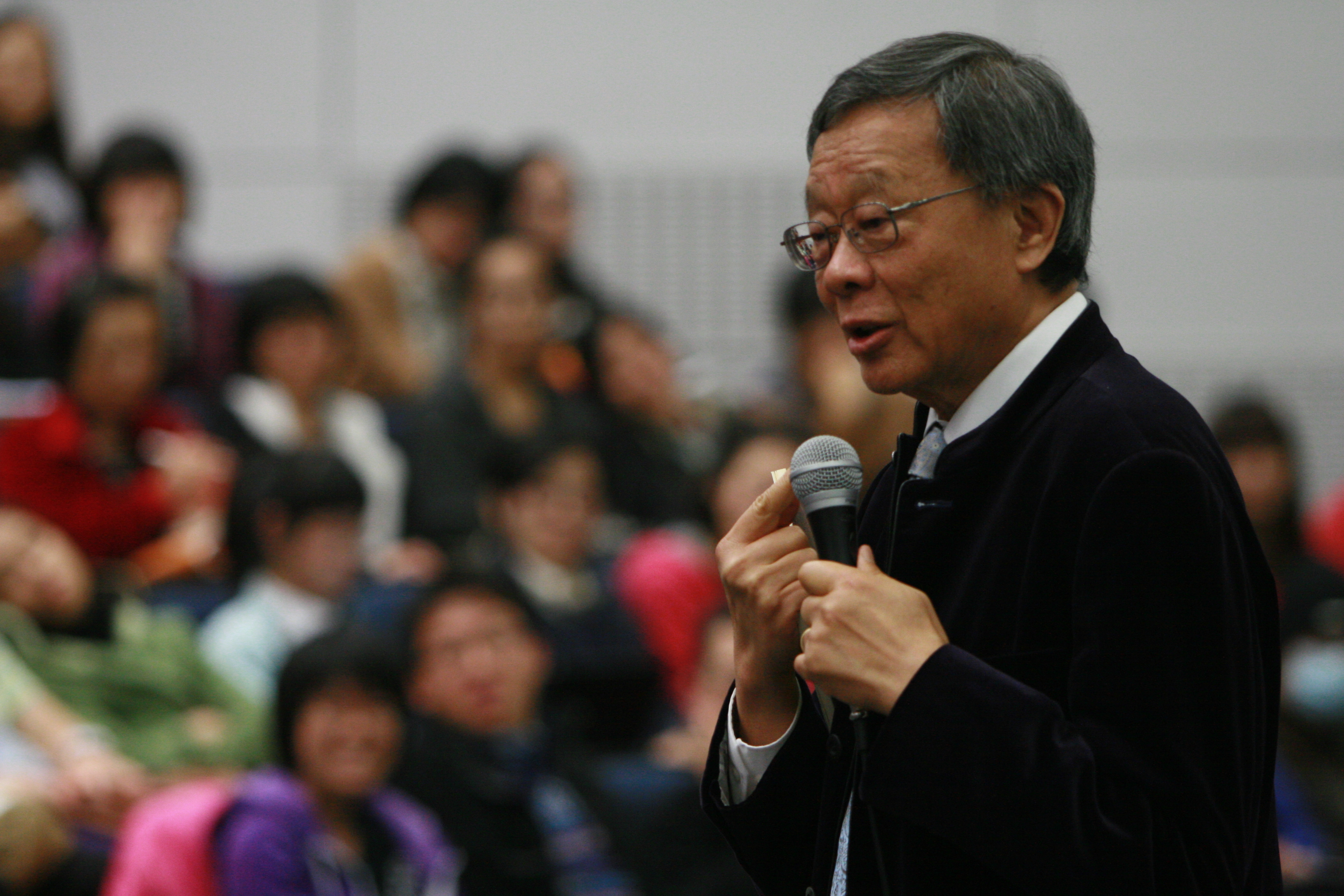
Lee is a commentator and author. He was a professor at Chinese University of Hong Kong, Princeton University, Indiana University, University of Chicago, University of California, Los Angeles, and Harvard University. He was elected a Fellow of Academia Sinica (Chinese Academy) in Taiwan.
[1] http://www.nytimes.com/2003/10/24/international/asia/24CHIANG.html
[2] http://china.usc.edu/usc-gains-treasured-chinese-collection
[3]http://digital.lib.umd.edu/archivesum/actions.DisplayEADDoc.do;jsessionid=17796A4CC5813ADDB316133EFC64CDC5?source=MdU.ead.litms.0037.xml&style=ead
[4] http://www.nytimes.com/1995/09/13/obituaries/eileen-chang-74-chinese-writer-revered-outside-the-mainland.html


